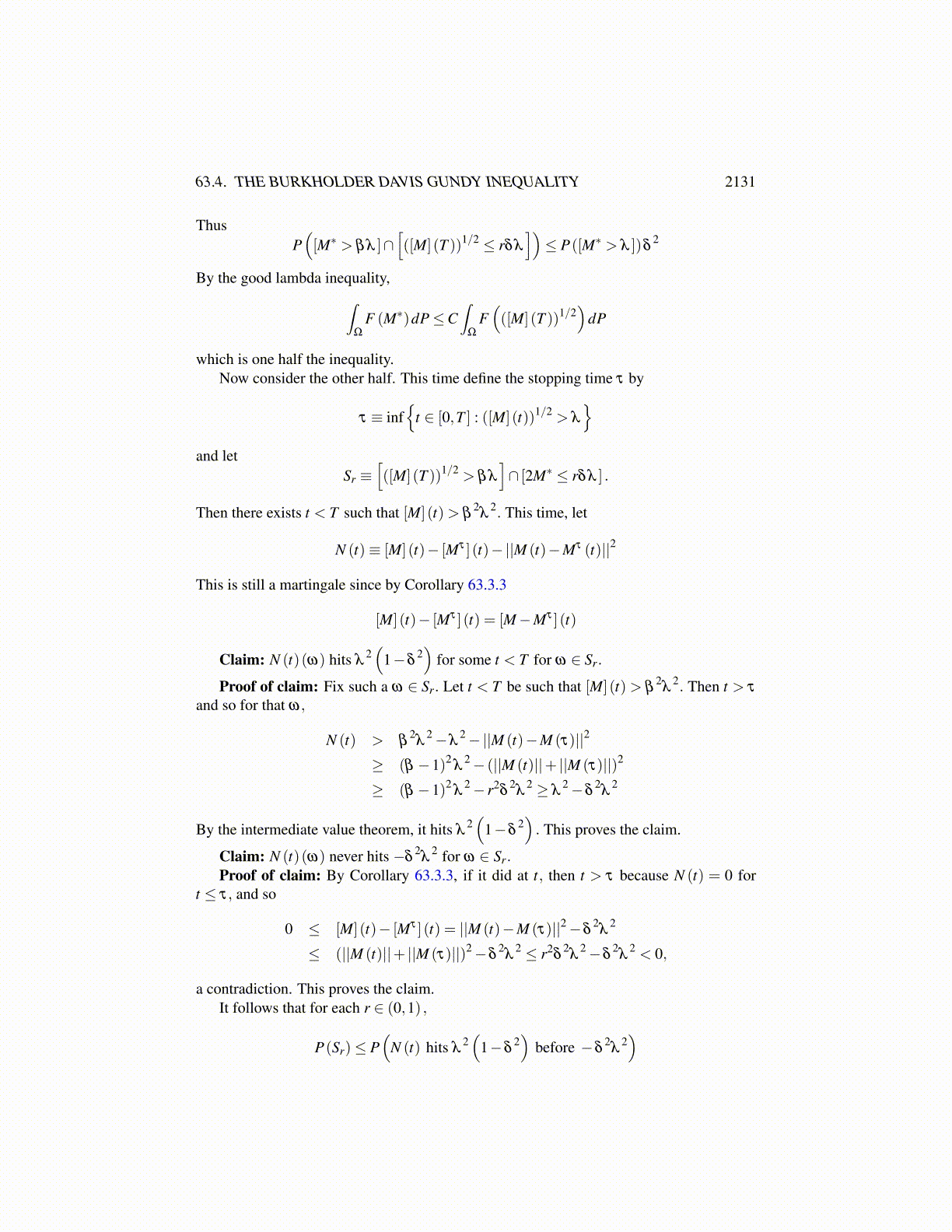
63.4. THE BURKHOLDER DAVIS GUNDY INEQUALITY 2131
Also suppose f ,g are nonnegative measurable functions and there exists β > 1,0 < r ≤ 1,such that for all λ > 0 and 1 > δ > 0,
µ ([ f > βλ ]∩ [g≤ rδλ ])≤ φ (δ )µ ([ f > λ ]) (63.4.12)
where limδ→0+ φ (δ ) = 0 and φ is increasing. Under these conditions, there exists a con-stant C depending only on β ,φ ,r such that∫
Ω
F ( f (ω))dµ (ω)≤C∫
Ω
F (g(ω))dµ (ω) .
The proof of this important inequality also will depend on the hitting this before thattheorem which is listed next for convenience.
Theorem 63.4.2 Let {M (t)} be a continuous real valued martingale adapted to the nor-mal filtration Ft and let
M∗ ≡ sup{|M (t)| : t ≥ 0}
and M (0) = 0. Lettingτx ≡ inf{t > 0 : M (t) = x}
Then if a < 0 < b the following inequalities hold.
(b−a)P([τb ≤ τa])≥−aP([M∗ > 0])≥ (b−a)P([τb < τa])
and(b−a)P([τa < τb])≤ bP([M∗ > 0])≤ (b−a)P([τa ≤ τb]) .
In words, P([τb ≤ τa]) is the probability that M (t) hits b no later than when it hits a. (Notethat if τa = ∞ = τb then you would have [τa = τb] .)
Then the Burkholder Davis Gundy inequality is as follows. Generalizations will bepresented later.
Theorem 63.4.3 Let {M (t)} be a continuous H valued martingale which is uniformlybounded, M (0) = 0, where H is a separable Hilbert space and t ∈ [0,T ] . Then if F isa function of the sort described in the good lambda inequality above, there are constants,C and c independent of such martingales M such that
c∫
Ω
F(([M] (T ))1/2
)dP≤
∫Ω
F (M∗)dP≤C∫
Ω
F(([M] (T ))1/2
)dP
whereM∗ (ω)≡ sup{||M (t)(ω)|| : t ∈ [0,T ]} .
Proof: Using Corollary 63.3.3, let
N (t) ≡ ||M (t)−Mτ (t)||2− [M−Mτ ] (t)
= ||M (t)−Mτ (t)||2− [M] (t)+ [M]τ (t)